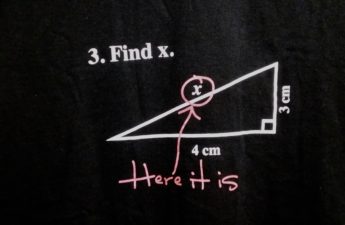I often open the first day of math classes by asking students to use one word to describe the subject of mathematics. As you can imagine, the responses vary widely.
Math is fun.
Math is easy.
Math is impossible.
Math is numbers.
Math is rules.
Math is necessary.
There are many, many more words I’ve seen students use to describe math. There’s one I try to steer them to by the end of the semester or school year, though. That word is patterns.
To say that you can boil the entirety of math down to the word “patterns” seems like an oversimplification. Maybe it is. For the sake of our time together today, though, that’s my story.
And, I’m sticking to it.
Math is patterns.
If you consider yourself to be a math person, you might be nodding your head in agreement about now. If you don’t, well…you probably think I’m a bit crazy. And that’s okay. I’ve come to understand it’s in that crazy space where the magic happens. Where we can actually start to shift perspective a bit. That’s the point here. One of the reasons I started this blog is to shift mindsets around math. The way you start is to look at things from another perspective. So, if you’ll stick with me here for a few minutes, maybe you can start to pull the thought thread that has you tangled in a knot about your relationship to math.
So, back to this idea that math is really just a bunch of patterns.
A few examples…
Counting, and our number system in general, is a pattern. How we operate with those number using addition, subtraction, multiplication, division…those all follow a pattern. There are patterns in how fractions and decimals work. A graph is a visual representation of a pattern. Equations, formulas, geometry, problem solving…all patterns.
You get the idea. Are you pulling the thread just a bit yet, or do you need more? Stick with me here, because this is where it gets good.
If mathematics is patterns and you notice, create, extend, and modify patterns as part of your daily life, then you are a math person.
Want some examples? There’s the obvious color and shape patterns. Those are often the ones we first learn about as children. Red, yellow, blue; red, yellow, blue… So, you notice the stripes on the referee’s uniform or that each row of rectangular bricks on your neighbor’s house is offset from the next. It’s more than that, though.
Did you ever stop to consider your morning or bedtime routines are behavior patterns? Or that you have the same repeated thoughts popping into your head every day? Or recognize someone just by hearing them speak? Are you a good speller? Maybe that’s because you’ve noticed certain spelling patterns in words.
What are the patterns you notice in the world around you? Are you good at spotting visual patterns of color or shape? Do you pick up on behaviors in yourself or others that get repeated? Are you able to stop yourself from falling into the pattern of a negative thought loop? Are you gifted with words?
Have you ever performed a dance routine or run a particular play in a sport like basketball or football? Those are patterns of movement. Have you played or listened to music? The melody and chorus and the underlying rhythm are all patterns of sound. Have you ever written a poem or a story? There are many ways to structure written language. Nearly all of them follow a pattern.
Maybe you’ve marveled at the petal structure of your favorite flower. Or you’ve noticed the rings in a tree stump. Or watched the waves at the ocean or the ripples in the water when you toss a rock into a puddle. What about the shapes and colors of seashells? Can you identify a tree by the shape of its leaves?
I think you get the point. Patterns are all around us and I believe if you are someone who notices patterns or creates patterns or modifies patterns someone else created, you are a math person.
So, here’s what I’m going to ask you to do. The next time you notice a pattern (and every time after that, until the knot gets unravelled), pause for the smallest of moments. Say to yourself, “I just noticed that pattern. I am a math person.” And, well see where it goes from there.
Want more of this in an audio format? Check out my podcast, I See Math People, on Spotify and Apple Podcasts.
To continue the conversation, visit apocketfulofpi on Instagram.



